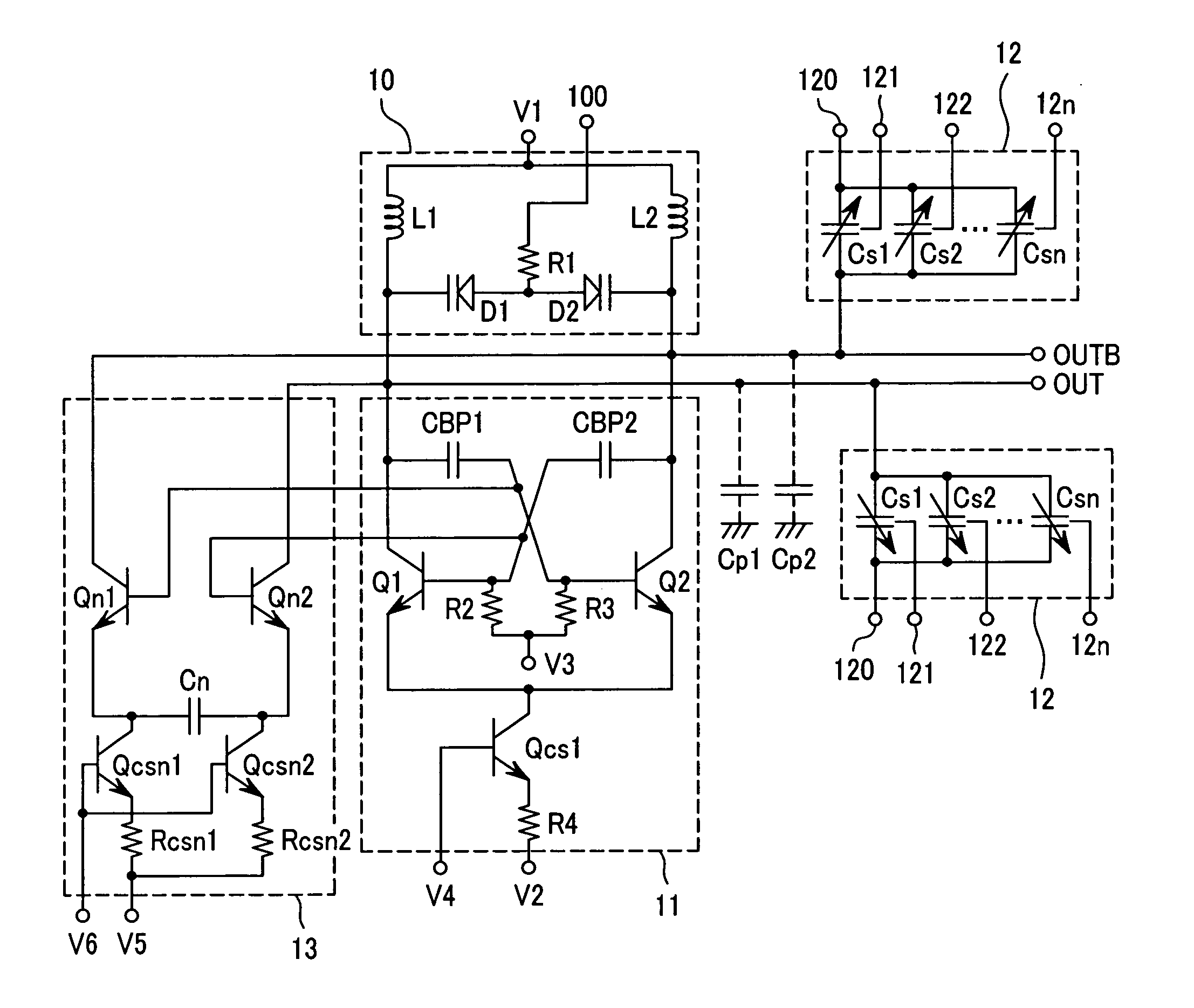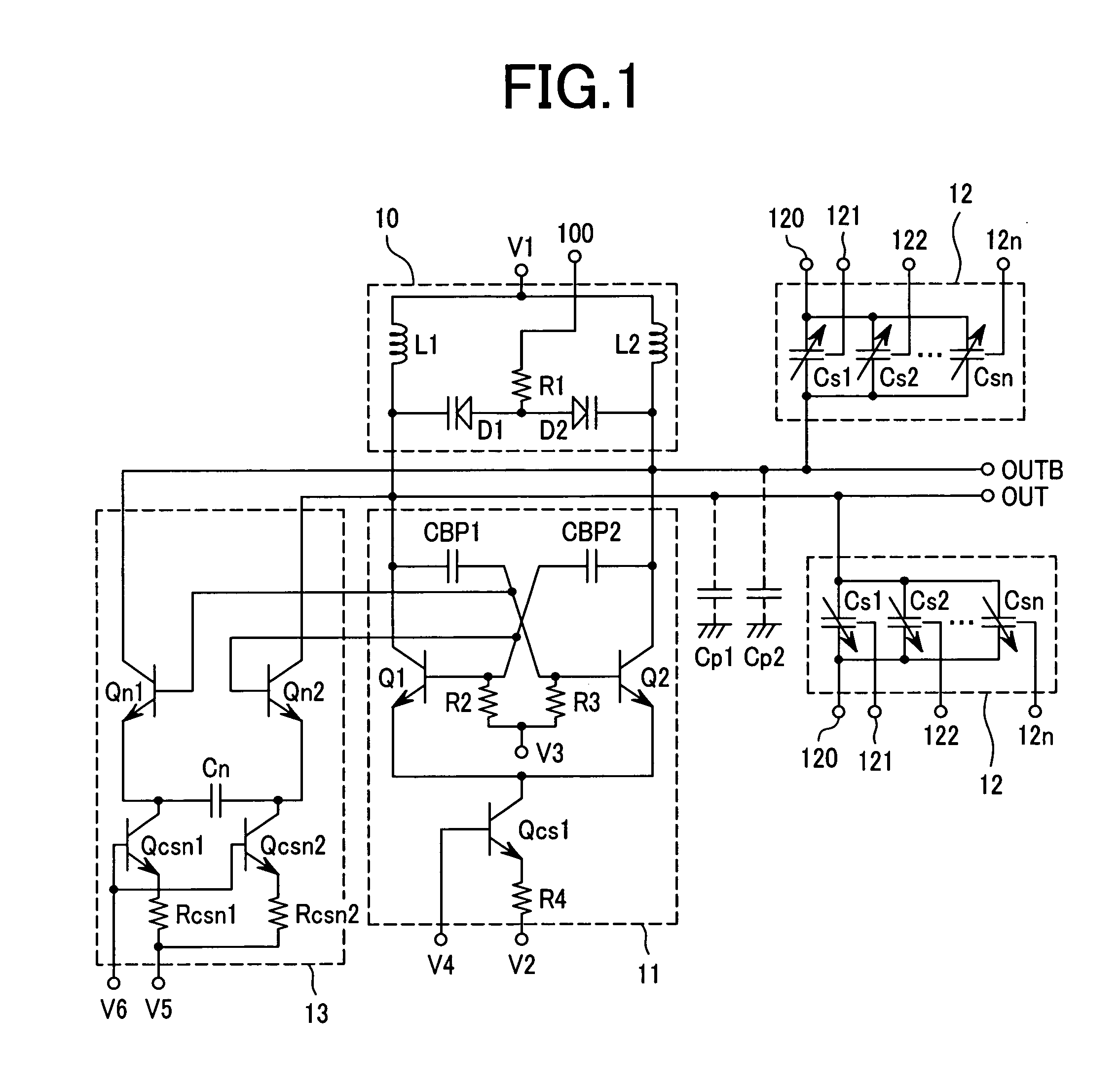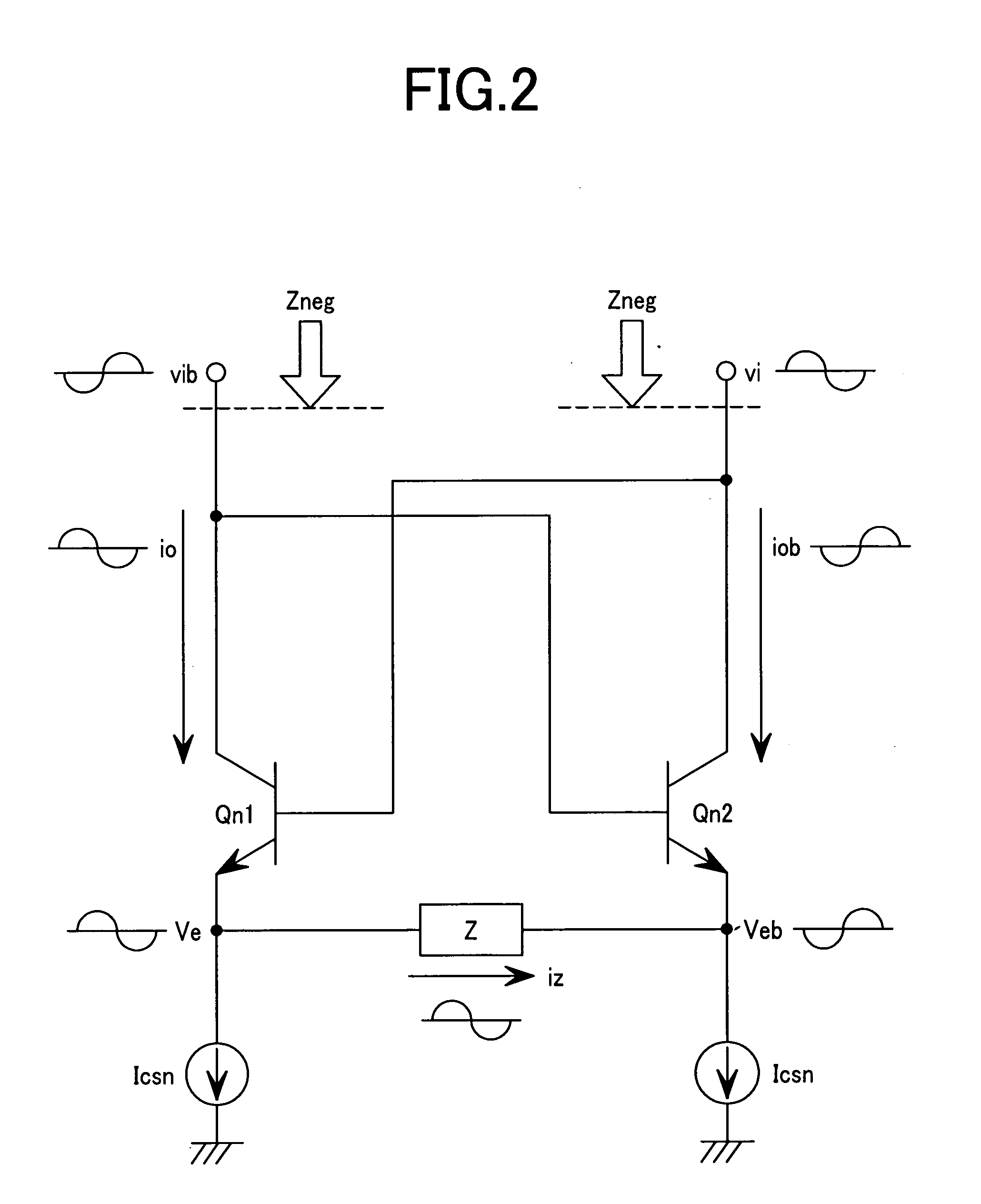Voltage controlled oscillator and wireless transceiver using the same
- Summary
- Abstract
- Description
- Claims
- Application Information
AI Technical Summary
Benefits of technology
Problems solved by technology
Method used
Image
Examples
first embodiment
[0039]FIG. 1 shows a first embodiment according to the present invention. A voltage controlled oscillator includes a differential LC resonant circuit 10, a differential negative conductance generator circuit 11, two capacitor banks 12, parasitic capacitors Cp1 and Cp2, and a differential negative impedance circuit 13. The respective positive phase terminals + and the respective negative phase terminals − of the differential LC resonant circuit 10, the differential negative conductance generator circuit 11, and the differential negative impedance circuit 13 are connected to each other, respectively, to thereby form a positive phase resonation node OUT (first terminal) and a negative phase resonation node OUTB (second terminal). Those two capacitor banks 12 are connected to the resonation nodes OUT and OUTB, respectively, and those capacitor banks 12 are integrated into a differential capacitor bank. The parasitic capacitors Cp1 and Cp2 are disposed on the wires of the resonation node...
second embodiment
[0059]FIG. 5 shows the present invention. The first embodiment shown in FIG. 1 is structured as the bipolar voltage controlled oscillator whereas this embodiment is structured as an MOS voltage controlled oscillator using the MOS transistor. This embodiment will be described below. The same structures as those of the first embodiment will be omitted from description. In the present specification, in the bipolar transistor and the MOS transistor, the bases and the gates are described as the input terminals, the collectors and the drains are described as the output terminals, and the emitters and the sources are described as the ground terminals.
[0060] Referring to FIG. 5, the negative conductance generator circuit includes two circuits of a negative conductance generator circuit 11a (first negative conductance generator circuit) and a negative conductance circuit 11b (second negative conductance generator circuit) which are used complementarily. The negative conductance generator cir...
PUM
 Login to View More
Login to View More Abstract
Description
Claims
Application Information
 Login to View More
Login to View More - R&D
- Intellectual Property
- Life Sciences
- Materials
- Tech Scout
- Unparalleled Data Quality
- Higher Quality Content
- 60% Fewer Hallucinations
Browse by: Latest US Patents, China's latest patents, Technical Efficacy Thesaurus, Application Domain, Technology Topic, Popular Technical Reports.
© 2025 PatSnap. All rights reserved.Legal|Privacy policy|Modern Slavery Act Transparency Statement|Sitemap|About US| Contact US: help@patsnap.com



